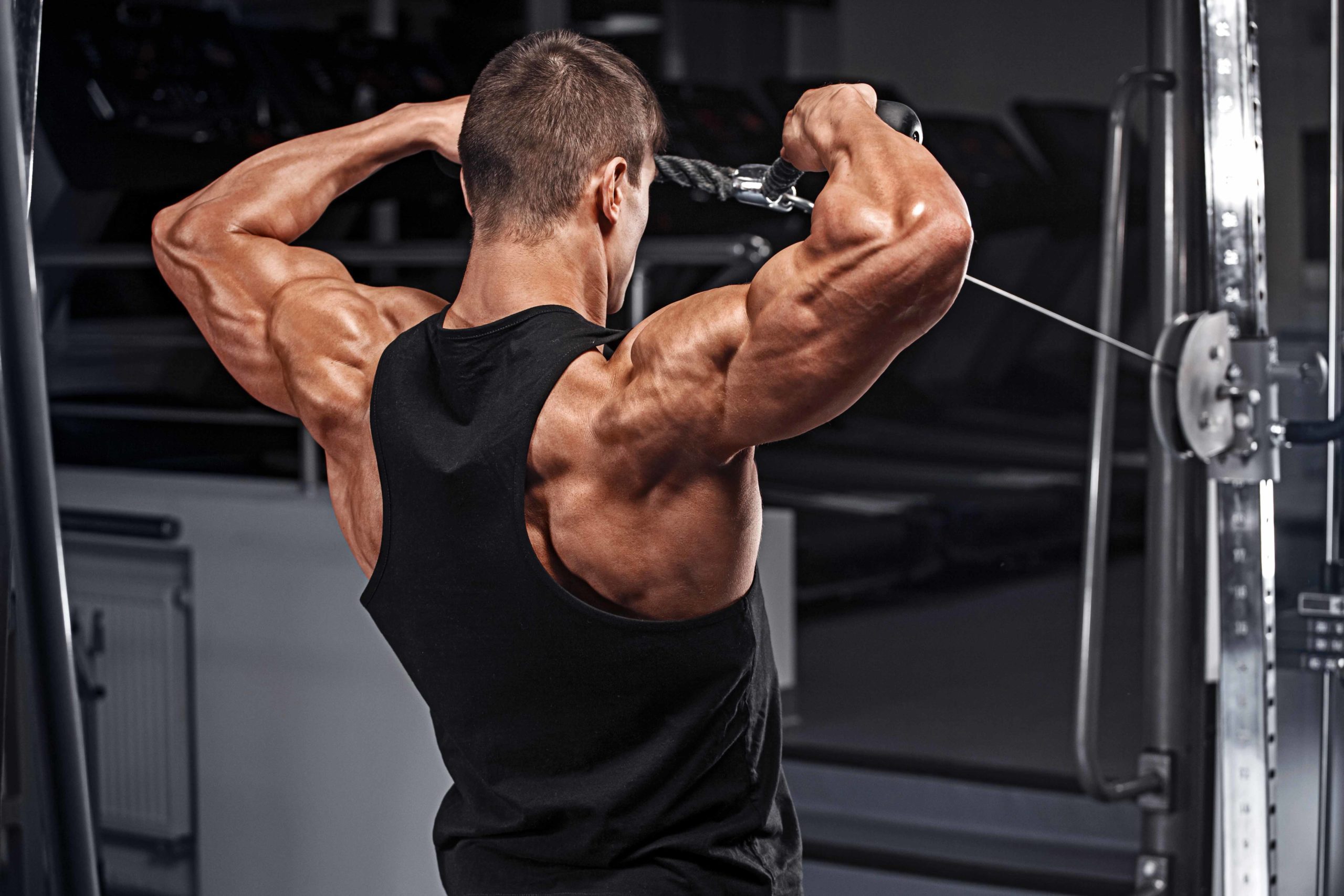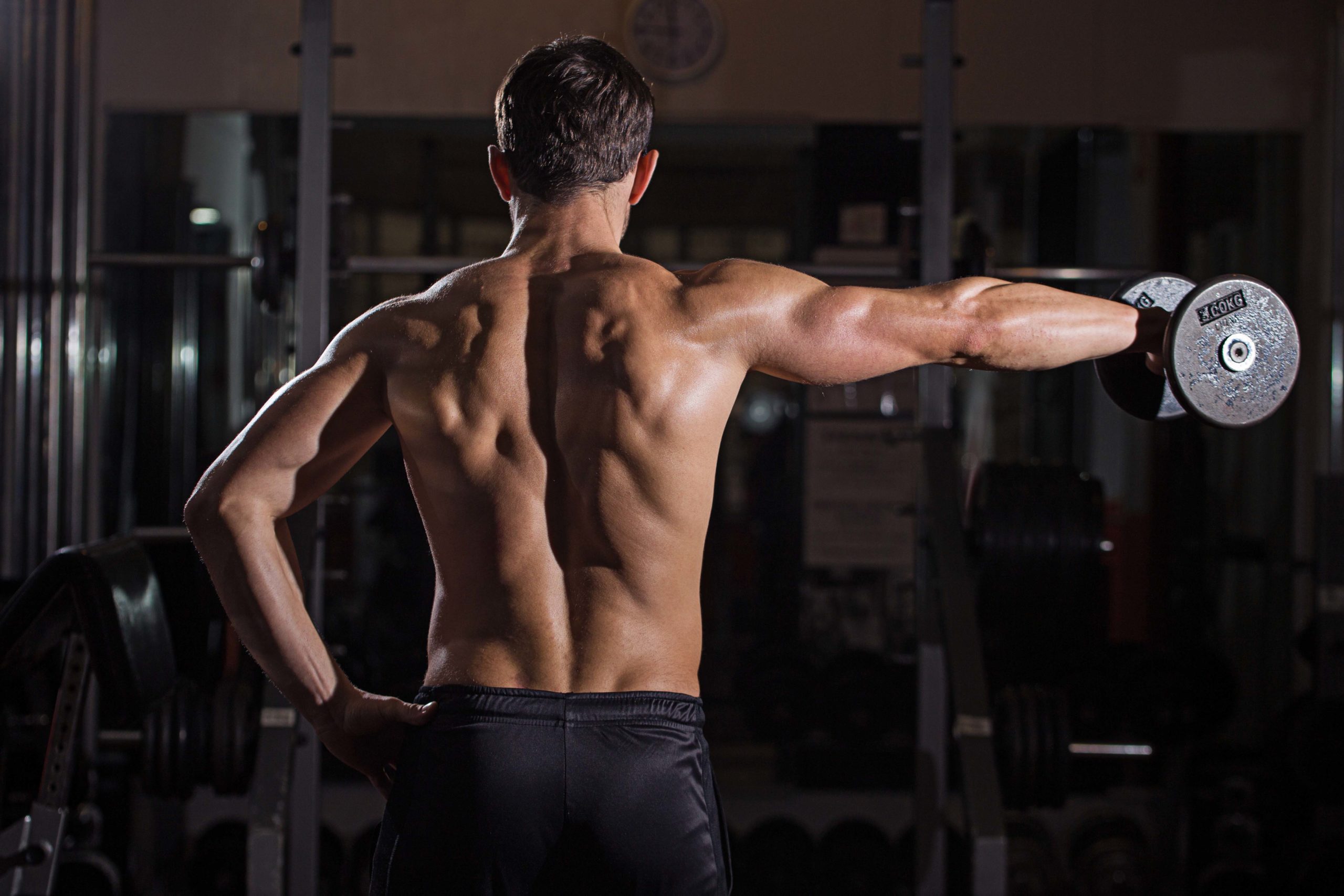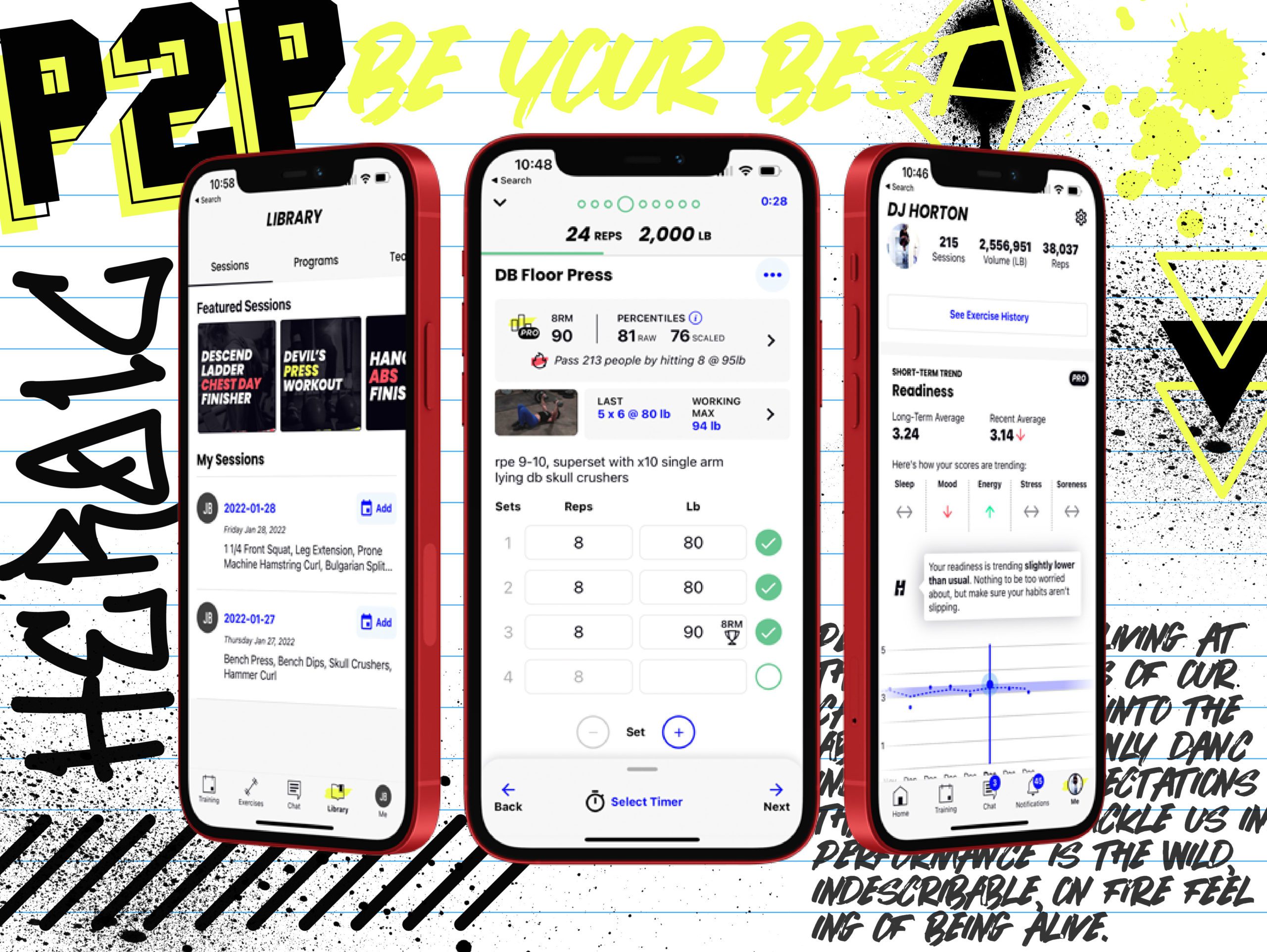3 Tips for Blasting Your Delts & Dominating Your Shoulder Workouts

Getting bigger, wider delts that pop off your shoulders requires more than just attacking your shoulder workouts — you gotta do them with purpose. Understanding positioning, muscle relationships, and the correct equipment to use is paramount to building the delts of your dreams.
Josh Gangaware is a personal trainer based in Boca Raton, Florida. When Josh isn’t training clients or working out himself, he’s mentoring other coaches, chasing around his two young kids, watching sports, or head-banging to heavy metal. Josh focuses on muscle-building for adults, athletic development for young athletes, and post-rehab training.
In this blog, Josh walks you through the key principles of building muscles and three helpful tips to work your shoulders both smarter and harder.

The Key Principles of Building Muscle
Any athlete, bodybuilder, or fitness enthusiast will tell you one of the most impressive things on a body is big, juicy shoulders.
Having shoulders that pop off the body instead of falling straight down from the shoulder joint is a mark of the sustained hard work and focus required to build a high-functioning upper body.
While some people are genetically gifted with the ability to build impressive delts, most of us need a more direct and focused approach. We can’t just look at a pair of dumbbells and think of doing side-laterals, we need to actually attack the shoulders in a very precise manner.
When it comes to building muscle, there are a few principles we must abide by:
1. We need high-functioning joints. In this case, we need shoulder joints (and surrounding areas, i.e. rib cage and shoulder blades) that are mobile AND stable enough to allow the muscle to produce maximum amounts of force. Warm-ups that are specific to you and your limitations are so important.
2. Putting ourselves in the correct position/posture can make or break your execution and, as a consequence, your results.
3. Exercise selection needs to be appropriate. To build muscle, we need to either load the muscle heavy or put it in lengthened positions to maximize tension across the muscle.
4. Do your isolations right. To maximize tension across the muscle, we can’t have extraneous body parts moving around wildly. One end of the muscle (the origin) needs to be locked into place while the other end (the insertion) moves about the full range of motion of the muscle.
My main points for this article can also be applied to other muscle groups, but today I’ll be focusing specifically on the shoulders.
Tip #1: Find the Scapular Plane
Movement is generally categorized in three planes: frontal (front-to-back), sagittal (side-to-side), and transverse (rotational). Most exercises are performed in one or more of these patterns.
To get the most of the shoulders, we need to find a fourth plane: the scapular plane. This angle is where your shoulder blades are in a neutral position and have the freedom to move around the rib cage.
The scapular plane lies at about 30-45 degrees in front of the midline of your body. If you hold your arm(s) straight out about half-way between right in front of you and out to the side, that is about 30-45 degrees. The exact angle will depend on your own body.
An easy test to find the scapular plane is to move your arm out at 90 degrees (like you would normally be doing an overhead press), move the upper arm forward slightly, and reach overhead. Repeat this step a few times and find the one that feels best reaching overhead. If you get it right, you shouldn’t feel any restriction from the humerus running into the AC joint (the joint that separates that collar bone from the shoulder blade).
The angle of the upper arm at this point is where your scapular plane sits. This is where any overhead pressing or lateral raises take place.
For the overhead press, this allows the front delt to be the primary mover and helps stave off impingement-type pains. Similarly, for the lateral raise, this position allows the middle delt to drive the motion.
Find the scapular plane and you’ll unlock better performance and have less trouble with injuries.
You Work too Hard to Not See Progress
Find Your Perfect Training Plan
Options for Every Goal
Training plans from real coaches covering any goal, fitness level, and number of sessions per week.
The Best Coaches
Get coached by the best. Olympians, ex-NFL stars, Titan Games Winners, Sport Scientists and more.
Starting at $1/ day
With many options including a free 7 day trial, you can try out programming before you commit.
Tip #2: Understand the Relationship Between Muscle Tension and Muscle Length
Whenever a joint goes through a range of motion, our muscles work in a spectrum of lengthened to mid-range to shortened positions. We may not always think of it in this way, but we inherently feel it when we lift.
Throughout this arc, muscles have varying degrees of force they’re able to produce. The strongest amount of force is produced in the mid-range while weaker forces are produced in the lengthened and shortened positions.
Working within each range can be beneficial to develop specific adaptations.
Shortened Range:
The shortened range generally produces more blood pooling (aka “the pump”) and metabolite accumulation. Getting into a position to work the shortened range usually requires stability at the joint.
Mid-Range:
Most of the exercises we perform lie in the mid-range. This is where our muscles are the strongest. The ability to load a muscle is probably the most important factor in growing it, and the mid-range allows us to drive the greatest amount of load through the muscle.
Lengthened Range:
This is the more stretched position of the muscle. Even though the muscle isn’t super strong in this range, it still creates a significant amount of tension across the muscle, which we can use to our advantage.

So why not just live in the mid-range, since it can produce the greatest amount of force?
Theoretically, it makes sense – if the only thing we are loading is the muscle. However, we need to remember that loading with (relatively) heavy weight, our joints and connective tissues are also taking some brunt of the force.
Working the mid-range is great and necessary for growth, but we need a bit of variability in how we attack muscles to avoid injury.
This is where getting into lengthened positions is a hidden gem for building muscle. Lengthened positions still allow you to keep crazy tension on the muscle, but because it isn’t as strong in that range, you don’t have to load it as much, sparing your joints (and still working the muscle).
To stay in the lifting game for the long-haul, our bodies like variability of movement. Working in some shortened and lengthened range opens a broader scale of movement, building mobility and stability.
Above any other factor, being consistent with training for long periods of time will net the greatest results. Taking measures to be able to do so is pretty darn important.
This concept becomes extremely valuable when we look at the appropriate tools to use for building muscle.
Level Up Your Training
With TrainHeroic’s immersive training app
TrainHeroic does everything you wish your old gym notebook could do.
Take the guesswork out of training with built-in exercise instruction and basic training programs. Compete against yourself and others. Track your performance and readiness. Smash your goals.

Tip #3: Choose the Correct Exercise Equipment
When it comes to building muscle, not every piece of equipment is ideal for the job. Leveraging isolation and external stability is going to give you the greatest opportunity at growing muscle. So, take advantage of the right equipment. You also need to understand where each implement can provide the greatest stimulus in a given range.
Instead of breaking down every implement, I’ll break it up into free weights, cables, and machines.
Free Weights
Looking at the shoulders specifically, free weights can be a great choice for hitting the mid-range on pressing movements. When it comes to exercises like lateral raises, we’re using more of a shortened range. The arc of movement of the lateral raise means the farther away the arm travels from the body, the greater the resistance is acting on the muscle. So we are not only changing positions of the limb to increase difficulty, but also how the load is acting on the muscle.
Conversely, on the overhead press, the load isn’t changing in terms of moving from the midline of the body (the weight is always being resisted vertically). Only the length of the limb is changing. Remember, free wights act against gravity, which is only going to act on them straight up and down.
On another note, free weights do require a good amount of internal stability and skill to perform the exercises correctly with enough load to generate a muscle-building stimulus. While it’s always great to work on the skill of movement, free weights may not be the best choice for building muscle – at least until you’re pretty advanced.
Cables
Unlike free weights that have variable resistance based on position, cables offer constant levels of resistance through a range of motion. This is great for developing the shoulders because you can make small adjustments to your body or cable position to bias shortened, mid-range, or lengthened ranges.
Performing a lateral raise (making sure your arm moves along the scapular plane) with the cable in the bottom position will hit more of the mid-range of the middle delt. If you slide the cable up to thigh-height and perform the same movement, you’ll focus on more of the lengthened range.
Machines
The major benefits of machines come from the external stability they provide, as well as the consistent path of motion.
Building muscle requires pushing toward failure of the muscle itself. With free weights there’s often some kind of limiting factor – usually your stabilizers or core. When you’re locked into a machine, you can push the muscle closer to failure.
Consistency of reps is also important, not just from a muscle building perspective, but also in terms of developing skill in the movement. The fixed path of the machine allows repeated reps in the same path without risking the rest of your body fatiguing.
The main drawback of machines is finding the correct positions, or even manipulations, to make them fit each individual body.
BONUS: Setting Up a Bodybuilding Program
If you’re working through a more bodybuilding style of programming, the easiest programming set up would look something like this:
- Shortened Range Movement: lighter weights/higher reps
- Mid-Range Skill: Based Movement: 5-10 reps with free weights
- Mid-Range Machine: Based Movement: 6-12 reps, leaving 1 in the tank
- Lengthened Range Movement: 8-12 reps, close to failure
For other styles of programming, try to make sure you’re working in shortened and lengthened range exercises regularly to get the most out of your training!
Want Training Tips, Exercise Guides & Knowledge Bombs Sent to Your Inbox?
Sign up for the FitNerd newsletter from TrainHeroic
Related articles
3 Ways to Improve Mobility Without Stretching
Are you still trying the endless foam rolling and stretching exercises to get that deep squat position? We know how important mobility is for great, or even GOOD performance. All professional athletes have some comfortability in end ranges of motion. So, what else do...
The Ultimate Guide to Lunges: Queen of all Glute Exercises
Your glutes are the largest muscle group in your body. They’re responsible for almost everything your legs do—walking, running, jumping, squatting, lunging, and just standing upright. As far as moving through space goes, strong glutes are the bedrock of overall...
A Beginner’s Guide to Steel Mace Training
Author: Jesse Grund
Mace training will make you a better mover without it’s not confining you to a fixed space or predetermined range of motion. Second, it’s an offset load with 80 to 90 percent of the weight in the head. You’re also constantly having to resist rotation, which creates greater core engagement.

Join the community
Sign up for the latest training news and updates from TrainHeroic

About TrainHeroic
Support
Made with love, sweat, protein isolate and hard work in Denver, CO
© 2022 TrainHeroic, Inc. All rights reserved.






